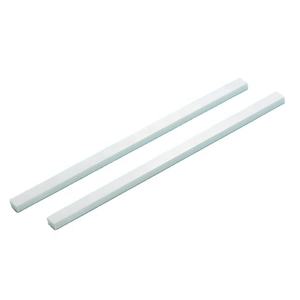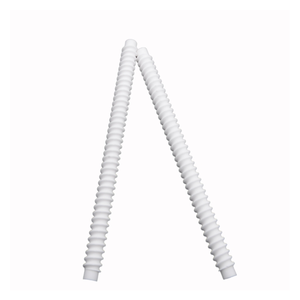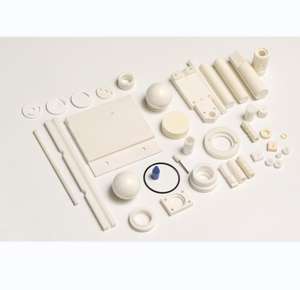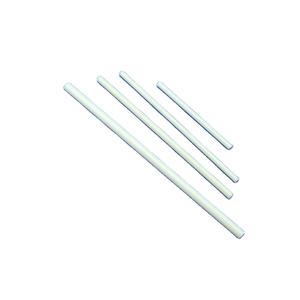Professional industry ceramic supplier, silicon nitride, silicon carbide, aluminum nitride and any other kinds of ceramics.
PRODUCT PARAMETERS
Description
Overview of Bare Aluminum Oxide Substrate 96% Al2O3 Alumina Ceramic PCB Sheet
Bare Aluminum Oxide Substrate 96% Al2O3 Alumina Ceramic PCB Sheet are one of the most widely used and versatile technical ceramics, prized for their excellent combination of properties. Composed primarily of aluminum oxide (Al₂O₃), they offer outstanding hardness, wear resistance, and electrical insulation, even at high temperatures. From low-purity grades for general industrial use to high-purity compositions for demanding applications, alumina ceramics provide a cost-effective and reliable solution across a vast range of industries.
Features of Bare Aluminum Oxide Substrate 96% Al2O3 Alumina Ceramic PCB Sheet
-
High Hardness & Wear Resistance: Excellent resistance to abrasive wear, making it ideal for liners, nozzles, and guides.
-
Superior Electrical Insulation: Maintains high electrical resistivity and dielectric strength, even at elevated temperatures.
-
Excellent Thermal Stability: Withstands high operating temperatures and exhibits good thermal conductivity.
-
High Mechanical Strength: Possesses good compressive strength and stiffness.
-
Chemical Inertness: Resists corrosion from a wide range of acids, alkalis, and other harsh chemicals.
-
Cost-Effectiveness: A highly versatile and economically efficient ceramic material for numerous applications.
Specification of Bare Aluminum Oxide Substrate 96% Al2O3 Alumina Ceramic PCB Sheet
This is a bare aluminum oxide substrate. It’s 96% Al2O3. That means it’s mostly alumina ceramic. People use it as a PCB sheet. It’s a flat, strong plate. The material is very hard. It resists scratches well. It handles high temperatures easily. Heat doesn’t bother it much. It also works well with electricity. It doesn’t let electricity flow easily. That’s good for circuit boards.
The ceramic is very pure. It’s 96% aluminum oxide. This high purity makes it reliable. It performs consistently. You get predictable results. The material is also very dense. It doesn’t have many pores. This keeps moisture out. Water won’t seep inside. That protects circuits.
You can get this substrate in different thicknesses. Common sizes are 0.25mm, 0.5mm, 0.635mm, 1.0mm, and 1.5mm. The surface is very smooth. It’s polished flat. This flatness is important. It helps make circuits precisely. The surface is also clean. It’s ready for making circuits.
The ceramic handles heat extremely well. It moves heat away fast. This keeps electronic parts cool. It stops parts from overheating. The material also expands very little when hot. Different parts expand at the same rate. This prevents cracks and breaks. It stays strong through temperature changes.
This alumina substrate is tough. It handles physical stress well. It won’t break easily. It also resists chemicals. Harsh substances don’t damage it. This makes it long-lasting. It works well in tough places.
People use this 96% Al2O3 ceramic sheet for many things. It’s great for making thick film circuits. It’s good for thin film circuits too. It fits high-power LED lights. It works well in power modules. It’s used in sensors and heaters. It’s chosen when heat management is key. It’s picked for demanding electrical jobs. It’s reliable.
Applications of Bare Aluminum Oxide Substrate 96% Al2O3 Alumina Ceramic PCB Sheet
Bare aluminum oxide substrate, specifically the 96% Al2O3 alumina ceramic PCB sheet, is a key material in demanding electronics. It excels at handling high heat. This material moves heat well, preventing parts from getting too hot. It stops heat buildup effectively. This thermal management is vital. It keeps circuits reliable and long-lasting.
Electrical insulation is another major benefit. The ceramic acts as a barrier. It stops electrical currents from moving where they shouldn’t. This is crucial for safe circuit operation. It protects components from short circuits. This high insulation strength allows complex designs. Designers can pack components closer together.
The material is very stable. It doesn’t change size much with temperature shifts. This dimensional stability keeps connections secure. Components stay properly aligned. It avoids stress on solder joints. This reduces failures over time. Stability is essential for precision electronics.
It also resists wear and tear strongly. Alumina ceramic is tough. It stands up to harsh chemicals. It endures physical abrasion. This durability ensures performance in tough settings. It works reliably over long periods. Devices last longer with this substrate.
Its main use is in LED lighting systems. High-power LEDs create lots of heat. The ceramic sheet moves this heat away fast. It prevents LED overheating. This extends the light’s lifespan. It keeps brightness consistent.
Power modules rely on it too. These modules manage high electrical currents. They generate significant heat. The substrate’s heat spreading ability is critical. It allows these modules to operate safely. Performance stays high without overheating.
Automotive electronics use this ceramic substrate. Cars have demanding environments. Under-hood temperatures get very high. Vibration is constant. The material handles the heat and shock. It provides dependable insulation. Automotive systems need this reliability.
It serves in RF and microwave circuits. These circuits need stable foundations. Signal integrity is paramount. The ceramic offers low signal loss. Its stable properties support high-frequency performance. Signals stay clean and strong.
High-temperature sensors also use it. Sensors in hot places need robust bases. The ceramic withstands the heat. It insulates the sensor elements accurately. Readings stay precise even under thermal stress.
This alumina ceramic PCB sheet solves heat and reliability problems. Its thermal conductivity, insulation, and toughness are proven. It enables advanced electronics to work well. It supports technology in many demanding areas.
Company Profile
Tanki New Materials Co.Ltd. focus on the research and development, production and sales of ceramic products, serving the electronics, ceramics, chemical and other industries. Since its establishment in 2015, the company has been committed to providing customers with the best products and services, and has become a leader in the industry through continuous technological innovation and strict quality management.
Our products includes but not limited to Aerogel, Aluminum Nitride, Aluminum Oxide, Boron Carbide, Boron Nitride, Ceramic Crucible, Ceramic Fiber, Quartz Product, Refractory Material, Silicon Carbide, Silicon Nitride, ect. please feel free to contact us.

Payment Methods
T/T, Western Union, Paypal, Credit Card etc.
Shipment Methods
By air, by sea, by express, as customers request.
5 FAQs of Bare Aluminum Oxide Substrate 96% Al2O3 Alumina Ceramic PCB Sheet
What is a 96% Alumina Ceramic PCB sheet? It’s a flat board made mostly from aluminum oxide. This material is very hard and strong. It doesn’t conduct electricity. It handles high heat well. People use it as a base for electronic circuits. It works well in tough conditions.
Why choose this Alumina Ceramic? It offers several advantages. It is mechanically strong. It resists breaking under pressure. It is an excellent electrical insulator. Current doesn’t flow through it easily. It manages heat effectively. This keeps electronic parts cooler. It lasts a long time. It doesn’t wear out quickly. These traits make it reliable.
How well does it conduct heat? The 96% Alumina Ceramic has good thermal conductivity. Heat moves through it efficiently. This rate is usually around 24-28 W/mK. This is much better than regular circuit board materials. It helps spread heat away from hot spots. This protects sensitive electronics.
What temperatures can it handle? This ceramic handles very high heat. Its maximum use temperature is high. It typically withstands up to about 1700°C. It won’t melt or break down easily. This makes it suitable for demanding applications. It works in environments where other materials fail.
Is the surface smooth? The surface finish is generally good. It’s fine enough for most electronic uses. You can put thin metal layers on it. This is needed for circuit patterns. The exact smoothness can vary. It depends on how it’s made. It’s usually sufficient for precise work.
REQUEST A QUOTE
RELATED PRODUCTS

Aluminum Oxide Al2O3 Ceramic Double Hook Guide Textile

High Hardness Alumina Ceramic Parts Aluminum Oxide Chemical Stability Ceramic Shaft

95% Alumina Ceramic Fixing Parts Aluminum Oxide Porcelain Element

Custom Precision CNC Machined Molding Al2O3 Aluminum Oxide Zro2 Alumina Ceramic Zirconia Components for Electronic Industry

High Quality 96% Aluminum Oxide Substrate Al2O3 Alumina Ceramic Wafer



